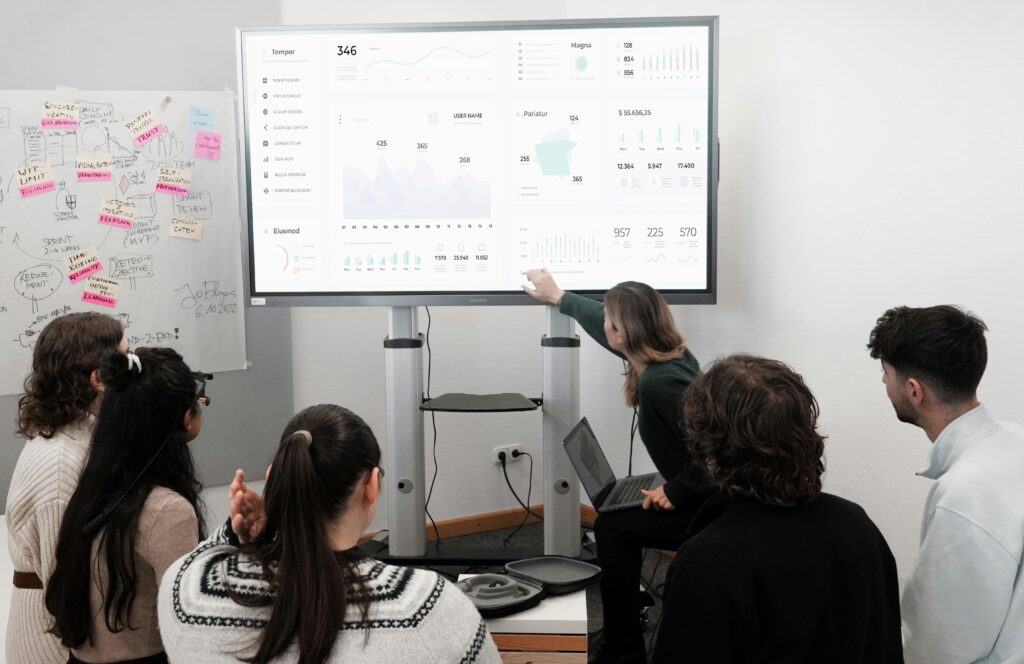Why you can’t trust averages in analytics, business, or everyday life. (even if they wear a suit and carry a clipboard)

Here’s a question nobody asks enough:
What if the number you’ve been trusting—your “average,” your clean little KPI, your pretty dashboard tile—is quietly sabotaging your decisions?We see it everywhere: average salary, average user time, average commute. It feels scientific. It feels solid. But averages often hide chaos behind a calm front—like a duck gliding on water while paddling furiously underneath. And in both data analytics and real life, that illusion can cost you big.
Let’s talk about why “average” might just be the most dangerous number in your entire business intelligence toolkit—and your personal life.
The Commute That Betrayed Me
You’ve got two routes to work:
- Route A: average time – 45 minutes, but super consistent.
- Route B: average time – 30 minutes, but it’s basically a coin toss between getting there early or rage-crying in traffic.
Guess which one looks better on paper?
Guess which one gets you yelled at for being late?That’s the problem: averages flatten reality. They ignore variance, and variance is where the real pain—and insight—lives. Route B mathematically wins, but logically, it’s a nightmare.
How Averages Lie in Business Reporting
Here’s how this statistical betrayal shows up in your favorite data dashboards:
1. The Support Team Illusion
Your customer service report says average ticket resolution is 2 hours. Great job, team! Except…
“Hi. It’s been 14 hours. Still locked out. Are you guys solar-powered or just asleep?”
The average is fine because most tickets are fast, but a few are dragging down customer satisfaction—and you never see it unless you look deeper.
2. Sales Team Smoke and Mirrors
You see a 30% average close rate. That’s impressive… until you realize Karen is closing 90% of her deals and the rest of the team is doing performance art, not sales.
The team looks good on paper. In reality? You’re running on Karen and a prayer.
3. Product Metrics Masking a Leak
Your DAUs (daily active users) are stable. Nice!
But your long-time, loyal users? Quietly churning. New users? Stumbling in, poking around, then ghosting. You’re holding the average—but losing your foundation.
Real-Life Chaos: How Averages Mess With Normal People Too
This isn’t just a business problem. It’s a being-human problem.
Buying the Laptop of Regret
You check the reviews: 4.5 stars average. Score!
You order it. The battery lasts 11 minutes. Customer support responds in Morse code. What happened? You trusted the average, not the distribution. Half the reviews were from people who hadn’t even turned it on yet. The rest were 1-star rage novels.
What to Use Instead (Because You Deserve Better)
If you’re serious about analytics, reporting, or even just surviving adulthood with your sanity, here’s what to use instead:
- Median: Gives you the middle ground. Not fooled by the extremes.
- Standard Deviation: Tells you how weird things can get.
- Percentiles: See how the top and bottom performers behave.
Segmentation: Don’t look at “all customers.” Look at new vs. returning, large vs. small, happy vs. angry tweet authors.
Final Thoughts: Averages Are Easy, But Reality Is Complicated
Averages are clean, simple, and often totally wrong. Whether you’re building data science models, crafting dashboards, managing BI tools, or just buying a blender—the average hides what matters most.
Ask:
- What’s the range?
- How much variance is there?
- Who’s inflating or dragging the data?
Because in analytics, in business, and in life—what’s typical isn’t always true.
TL;DR
- Averages make messy data look clean—but lie by omission.
- They hide outliers, mask team imbalances, and mislead decision-makers.
- Use medians, deviations, and segments to uncover the real story.
- Be skeptical. Be curious. Ask better questions.
Because the one thing worse than not using data…is using it wrong.
About the Author
Marvin Baesa is a Business Intelligence Analyst and Data Expert solutions based in the Philippines. He works closely with the U.S. and Australian based companies across a wide range of industries—including e-commerce, legal services, marketing agencies, real estate, manufacturing, and logistics—helping teams transform raw data into actionable insights.
With over 5 years of experience in data analytics, reporting automation, dashboard development, data engineering, and process automations and optimization, Marvin is passionate about making data make sense and accesible. Whether it’s uncovering hidden trends in sales, cleaning messy CRM exports,automating manual reports and processes or building dynamic dashboards, his goal is always the same: to turn data into decisions.
He is the founder of DataWithMarvin.com, a platform where he shares no-fluff insights on analytics, data science, reporting best practices, and real-world business applications—with the occasional touch of humor and real talk from the trenches.
When he’s not elbow-deep in SQL queries or series of questions that makes his life exciting, Marvin is mentoring new analysts, brainstorming witty t-shirt ideas for his apparel brand, or helping companies scale through smart outsourcing via Subconify Solutions.
📫 Connect with Marvin: engr.marvinbaesa01@gmail.com
Proudly powered by WordPress
